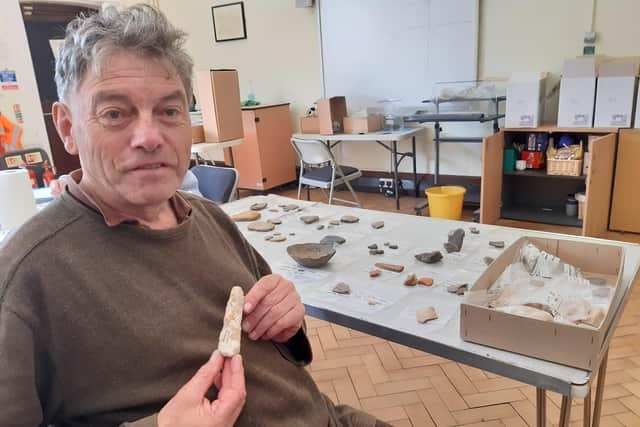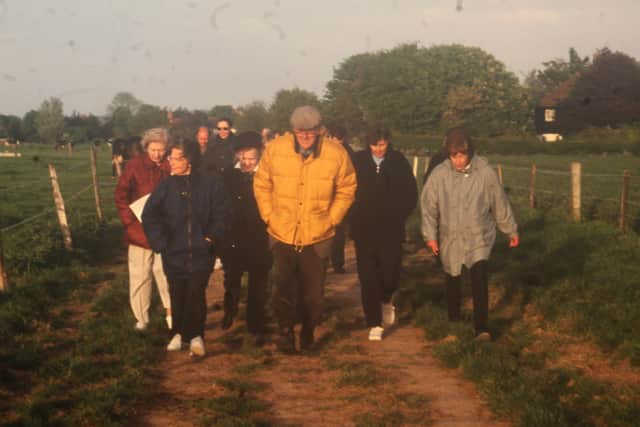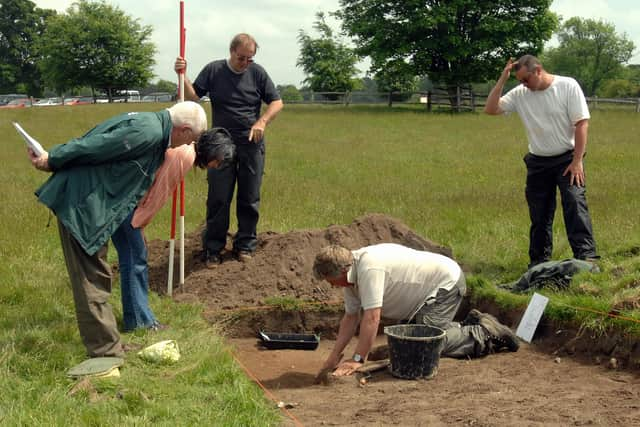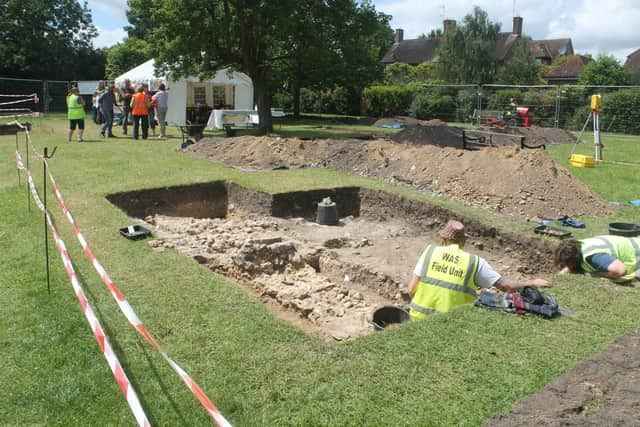Worthing Archaeological Society: 100 years dedicated to the history of West Sussex, including findings of national importance
and live on Freeview channel 276
An informal meeting, instigated by Marion Frost, was held on January 10, 1922, and the inaugural meeting of the society was held on February 2, 1922, with a lecture on 3,000 Years of Hidden Treasure by Thomas Sheppard.
Such was the importance of the occasion, it appeared on the front page of the Worthing Herald on February 4, 1922. It was said that the true function of the society should be to deal with treasure which had been buried nearby in the past 3,000 years.


Advertisement
Hide AdAdvertisement
Hide AdMr Sheppard, who gave the lecture at St James’ Hall in Montague Street, Worthing, punctuated his speech with vivid flashes of humour and it was noted the society wanted members who were ‘intelligible and interesting’.
The founder, Marion, gave a number of lectures over the next decade and spoke about the Saxon cemetery at Highdown at her last lecture on October 15, 1935. She died on December 27, 1935.
Alex Vincent, who has produced a fascinating booklet to mark the society’s centenary, said: “The society has played a major role in excavating various sites, co-operating with other societies such as the Sussex Archaeological Society, over the years.
“Some of these were the Bronze Age farm at New Barn Down near Patching in 1933, the bath house site at Highdown in 1937, the site of St Nicholas Church in Angmering in 2015 and recently at the Malthouse Field in Sompting.”


Advertisement
Hide AdAdvertisement
Hide AdAlex has been a member since 1986 and does a lot of research for the society. He said much of his knowledge came from the late Con Ainsworth, an amateur archaeologist for 50 years.
He added: “My interest started through watching a programme on a dig and the first book I bought was The Amateur Archaeologist.
“I have been on many excavations. My main interest is flint mines and there is a possibility that I might have discovered a couple.
“I have been doing a lot of research on the Chatsmore Farm site in Goring. We found a lot of Neolithic material and possible a lot of Roman artefacts, too.”


Advertisement
Hide AdAdvertisement
Hide AdKeith Bolton, chairman, said the society is mainly working on excavations in the summer, while in the autumn, the focus is on geophysics, looking at what is under the soil as they plan for the following year, as well as workshops at Worthing Museum.
Keith added: “Most of our work we do by invitation. We have a long-term relationship with the National Trust at Slindon and we have been working there since the mid-1990s.
“At Clymping, where the Environment Agency is removing the sea defences, we are monitoring coastal erosion and seeing what may be exposed. There are Medieval settlements that were lost to sea. We liaise with beachcombers and record finds, which have included a lot of beads.”
Keith explained that the smallest items of interest they keep are roughly the size of a thumbnail, although smaller items of jewellery will be saved.


Advertisement
Hide AdAdvertisement
Hide AdThe society covers the area from Steyning to Eartham and up to Shipley and Bignor. As well as excavations, research, lecturing and guided walks, the society has held many other events, such as coach outings, holidays and visits to various archaeological sites.
The first excursion was to Shoreham on April 26, 1922. It was organised by Cynthia Shilbach, who put in many hours searching for places to visit.
Other key members over the century have included Dr E. Curwen and his son Dr Ratcliffe-Densham, Jane Evans, Major A.C. Roper and John Pull, a working-class archaeologist who made discoveries of national importance. He helped uncover the Neolithic flint mines on the hills above Worthing, forever changing the knowledge of this revolutionary period in Britain’s history.
Stained glass windows devoted to the memory of John Pull, who died in 1960, and Con Ainsworth, who died in 2001, can be found on Worthing Pier.
Advertisement
Hide AdAdvertisement
Hide AdLiz Lane, membership secretary said: “John Pull was a very able archaeologist but also a geologist and a talented illustrator. We incorporated some of his drawings into the window, including his drawing of a handaxe within the Shepherds’ Crown.
“Con Ainsworth’s knowledge of Sussex archaeology was extensive and he inspired many folk to get involved and to study further. We included the flint mines of Cissbury in his window, as this is such a significant area for the local archaeology and for Worthing.”
There is a lot of expertise among members and they can help beginners unearth ways to get involved if they are new to the field. Visit www.worthingarchaeological.org for more information on how to get involved.
Advertisement
Hide AdAdvertisement
Hide AdFor the latest breaking news where you live in Sussex, follow us on Twitter @Sussex_World and like us on Facebook @SussexWorldUK
